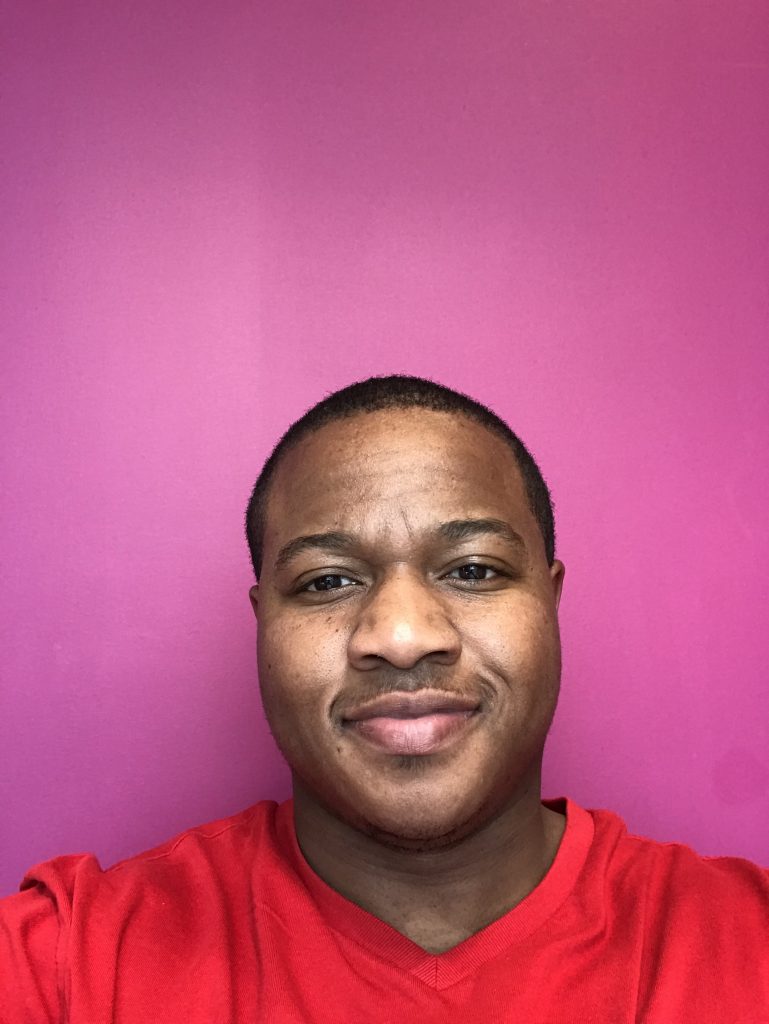A guest post by Marriel Johnson
Imagine you’re in India, sharing a sweet fizzy soda with your son while enjoying a relaxing outing. The delicious drink quenches your thirst and, as you admire the bottle, you read on it the words: “Willowdale, Ontario, Canada”. Suddenly it occurs to you that this is it. You will be going to Canada in pursuit of your professional dream of becoming a biomedical scientist. This scenario may sound like the beginning of a novel, hinting to many exciting events to follow—if this is your thinking, you are on the right track. The main character is Prakash Sambhara, a researcher with extensive expertise in immunology and virology. Prakash embraces the power of visualization and, by sharing his personal life story, inspired me to find out more about this power. He told me how visualization had positively impacted his life, and how anyone can apply it to fulfill personal and professional dreams. The soda bottle experience is only one of the many visualizations that shaped his life path.

Prakash’s “Willowdale” vision helped him move across continents. He completed a Master of Science degree in Microbiology at the University of Wyoming and then, serendipitously, he enrolled in a PhD program in Immunology at the University of Toronto, Ontario, Canada (Willowdale is a neighbourhood in the city of Toronto). After obtaining his PhD, he continued his science career for several years as Section Head of Immunology at the Aventis Pasteur (now Sanofi Pasteur) Biotechnology Research Institute in Toronto. From there, he moved to Atlanta, where he is now Chief of Immunology at the Centers for Disease Control and Prevention. His life path is a case in point for some of the words that most captivated me. He said: “How you drive your life is in your hands. Everyone is unique.”
Indeed, Prakash’s journey to becoming a scientist at the head of major research projects in the field of translational immunology was not a direct one. In India, he first worked as a veterinarian and then as a loan officer, before one day opening an immunology book and discovering his true passion. As he warmly spoke about the twists and turns of his path, I felt reassured about my own plans. Prakash’s motivational words—”fearlessly create your own path” and “see the ending at the beginning”—inspired me to visualize myself as a successful clinical trial manager, helping others prepare to do the same.
But how can we unlock the power of visualization? We all have this power, and we can make the best of it if we know how it works. I learned from Prakash that the efficacy of the visualization process is based on four main factors: frequency, duration, vividness and intensity. Frequency reminds us of taking advantage of every possible opportunity to gain more knowledge and experience pertaining to the specific craft we’re interested in, while regularly networking with professionals in the science community for mentorship and advice. He emphasized being patient (duration) while waiting for your visions to become reality even when obstacles are presented, and pointed out the importance of practicing vividness—”speak about your goals and write about them.” He routinely practices vividness with the immunology research team he directs and recommends it to anyone who is actively pursuing dreams. Finally, he pointed out that vividly describing your goals takes on additional value if, at the same time, you ask yourself: “How serious am I about reaching my goals? How much do I want to reach them?” Asking these questions ensures that you’re addressing intensity, the final component of the visualization process.
While I believe that learning about Prakash’s tried and true visualization process is a gift that all of us can benefit from, there is something else I learned from him and further inspired me to become a leader in the biosciences—his clear depiction of an effective leader. He emphasized the importance of developing a personal and distinct leadership style, while at the same time maintaining the essential ability to motivate others and inspire their growth. Prakash said: “A leader prepares others to step into their shoes.” He has certainly done that himself, mentoring and preparing trainees and junior scientists to reach their full potential as internationally recognized, innovative investigator. And he certainly personifies confidence, enthusiasm, positivity, and integrity, characteristics that he describes as typical of all great leaders.
I will forever carry with me the powerful “visualize to realize your dreams” suggestion. I will also make sure to follow his “do not compare yourself to anyone else because you are unique” advice. Remember, since you are unique, your leadership style will be too. Can you vividly imagine where you will be in your professional journey ten years from now?

About the author — Marriel Johnson: I am a senior biological science major at Georgia State University and a licensed insurance professional. I have always been a science enthusiast. I possess a special love for clinical research because of the endless possibilities to assist in efforts to identify and eradicate diseases; therefore, my aspiration is to be a clinical research site manager. During my leisure time, I enjoy spreading my love for science as a STEM instructor and academic tutor. My free time also includes working out, playing sports, spending time with family, and reading.
Copyright © 2016-2020 STEMM Leadership




Dr. Sambhara embellishes the mindset of visualization, which I believe is a very positive mindset one can have on their surroundings. Visualization is something I’ve practiced along side the Law of Attraction. The Law of Attraction, simply put, is the belief that positive or negative thoughts bring positive or negative experiences into a person’s life. Whenever I’m working toward accomplishing an objective in life, I try to envision myself already there. Why is it different from daydreaming? Because I’m using key-results to measure my progress to get there.
When Dr. Prakash Sambhara talked about his experience on the way to success, I personally empathized with him. It is unlikely to find the shortest path to success for the general. Dr. Sambhara tried different positions before he became the Chief of Immunology at the Centers for Disease Control and Prevention. He never gave up and stuck to his goal.
I always think about who I want to be and what I want to do. I try to explore in different branches in biology and find out the one I love. As a result, during my undergraduate studies, I participated in studies on biomaterials using computational methods. Then I turned to carry out experiments to develop biomaterials during my graduate studies. I finally realize I am really interested in solving biological problems with computational methods. So I change my major to bioinformatics after graduation and pursue a Master’s degree in bioinformatics now.
Visualization is a very powerful way to help achieve success in various fields. I often imagine what I will be in the future. The process may last for several minutes or more when I am free and relaxed. I think about how I can be a specialist in bioinformatics and what type of career I want. In addition, to pursue a Ph.D. degree in this field is one of the clear goals in my visualization. The desire to learn and work with computational methods is strong that I am willing to change my major after I spend seven years on learning in the field of biomedical engineering. The four elements of visualization are indeed important to make the visualization effective and clear.
People’s goals are different, so are their visualizations and leadership styles. I agree with Dr. Sambhara’s opinion of leadership. Instead of following models all the time, a successful leader should develop his/her own style based on the personalities and situations.
Dr. Sambhara’s story was very inspiring. Seeing how his path to becoming the Chief of Immunology at the Center for Disease Control and Prevention was far from a straight route indeed showed me that there would be bumps in the road. Still, if you remain steadfast and “see the ending at the beginning,” you can achieve all of your goals. Dr. Sambhara’s story taught me that when visualizing my dreams, I have to be completely okay with getting out of my comfort zone and taking a leap of faith in all of my endeavors. Dr. Sambhara’s message of the power that visualization has resonated with me and allowed me to reflect on how I should visualize my future despite my circumstances and my fears. His message encouraged me not to be discouraged when things do not go as planned or when the timeline, I have set doesn’t work out. When Dr. Sambhara gave us the takeaway of writing our goals down on a card and putting it in our wallet, it gave me a sense of security that just like him, I don’t know what the future may hold. Still, if I too visualize what I want, I will one day be the veterinarian I aspire to be. This message is so powerful, and I am glad that he also inspired you to visualize your goal of becoming a clinical trial manager. Overall it allowed me to reflect on how although I can’t actually see my future, being able to visualize what I want and put it out into the atmosphere is the first step in achieving my goals.
Dr. Prakash had an excellent presentation and has a story unlike anyone’s I’ve ever heard. The power of visualization is seen often in people who set goals. Goal setting is key in any endeavor, and what is better motivation to reaching that goal than using your imagination to see yourself attaining that goal? If you can see how much better your life will be at the end of the journey, those long days in the lab wont be so long.
It would seem that Dr. Prakash has used visualization for much of his life and will likely continue to do just that to fulfill his goals.
I am amazed at Dr. Sambhara’s ability to visualize his future in such a way that his dreams become his reality. Sometimes I find myself caught up in the day to day things, and I don’t think about how my choices and decisions could affect my future. While there is no straight path to your definition of success, I find Dr. Sambhara’s words “see the ending at the beginning,” to be helpful to visualize where you want to be. Once you envision where you want to go, you’ll have a clearer idea of what needs to be done to get to your goal. While having the end in mind is essential, I found Dr. Sambhara’s life journey to be comforting as he took a few deviations from his path until he became the Chief of Immunology at the CDC. As a student, I’m always wondering about what I need to be doing to better myself in the next stage of life so I can go on one clear path. I’m encouraged to know that even the Chief of Immunology at the CDC, didn’t plan for the roundabout way he reached his career.
Dr. Sambhara’s story is truly incredible. His journey is a great example of how life Is very unexpected. The path to success in your career is never a straight uphill road. In Dr. Sambhara’s case he had to move across continents. Meaning he left behind his comfort. Dr. Sambhara taught me that I need to be comfortable with the uncomfortable. This includes stepping out of my comfort zone. I can absolutely agree that there is power in visualizing your dream. To “see the ending at the beginning” is key! This is also helpful when we feel like giving up on our dreams. It is important that we maintain are focus on the end goal and not the challenging journey. I agree that by writing down your goal and speaking about them is a true visualization technique. I love to create vision boards every six months. A vision board is a board filled with pictures of your goals. I have mine set by my mirror which is forces me to see it every day. Making a vision board will allow you to fulfill personal and academic dreams.
I loved the message that everything is in our hands, because that is true. No one else is in charge of our future except ourselves and I think that’s something we forget, especially when we feel discouraged. If we truly want something, we’d do whatever it takes to get it. Dr. Sambhara is a great example of just how powerful visualizing your future is. To start off by simply dreaming of working at his favorite drink company sounds like an unrealistic dream, but he is proof of all the hardwork he accomplished in order to achieve that one dream so long ago. His journey also exemplifies how nonlinear life is. I think that’s an extremely important message to send to anyone, but especially to those still in school. It’s easy to quickly get bogged down on not getting into our dream school, or get that dream job- but it’s important to trust the process. Put enough effort into something and you will get it.
I completely agree. The idea that we all have that things will work out only if other people accept us is false and childish. Too often people give up due to the answer of a “no” or a door closed. Our lives are not dependent on other peoples choices and opinions. We make our own lives worthy and meaningful. Dr. Sambhara didn’t allow other people to visualize and make his choices for him, he went out of his way to make his dreams work. He took many paths people would be discourage or scared to take. It’s truly inspirational. Sometimes that non-linear is more meaningful that a linear one. I agree, its a message all students should take in.
Dr. Sambhara’s advice of “visualize to realize your dreams” and “do not compare yourself to anyone else because you are unique.” also stand out to me in the most vivid way. Ever since I found my passion for science, I have always dreamed of being able to use my passion and the knowledge I acquired to make positive contributions to our society one way or another. Dr. Sambhara’s story and advice further assured my decision to pursue this pathway. However, his emphasis on the four main factors: frequency, duration, vividness, and intensity that influence the efficacy of the visualization process, also helps me realize that persistence is necessary for archiving my goals. Specifically, to be persistent in looking out for opportunities and not to give up to hardships encountered along the way. Through Dr. Sambhara aspiring talk, I found myself once again become more hopeful and excited for what’s about to come in the future despite knowing it will also hold immense challenges ahead.